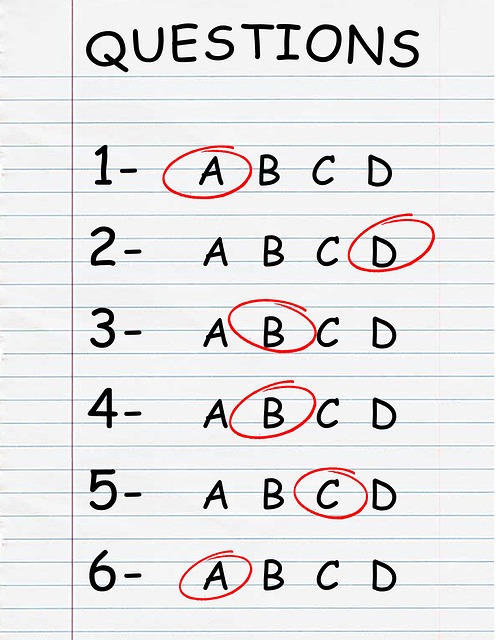Does Robinhood Allow Paper Trading Options? What Traders Need
Author: Jameson Richman Expert
Published On: 2025-10-25
Prepared by Jameson Richman and our team of experts with over a decade of experience in cryptocurrency and digital asset analysis. Learn more about us.
Does Robinhood allow paper trading options? In short: not in the way many active options traders expect. This article explains exactly what Robinhood offers (and doesn’t) for simulated options practice, why paper trading matters, practical workarounds inside Robinhood, the best full-featured alternatives for options paper trading, and step-by-step guidance and examples to practice options strategies safely before risking capital.

Quick answer — can you paper trade options on Robinhood?
Short answer: Robinhood does not provide a formal, built-in options paper trading simulator comparable to industry-standard simulated platforms (like thinkorswim’s paperMoney or Interactive Brokers’ PaperTrader). While Robinhood’s app offers educational content and portfolio tracking tools, it lacks a dedicated virtual account that replicates realistic options fills, margin behavior, assignment mechanics, and simulated market conditions for practice trading options.
If your goal is hands-on simulated options experience — placing option orders, seeing fills, tracking realized/unrealized P&L and experiencing assignment or margin notifications — choose an alternative platform with explicit paper trading features (covered below). If you mainly want to learn options basics and plan trades conceptually, Robinhood’s educational materials and mock calculations can still help.
What is paper trading? (definition and why it matters)
Paper trading is the practice of simulating trades using a virtual account without risking real money. The goal is to practice order entry, test strategies, understand risk/reward, and learn execution mechanics in a low-stakes environment. For a formal definition and background, see the Wikipedia entry on paper trading and Investopedia’s paper trading guide.
Paper trading is especially valuable for options because options pricing and behavior depend on factors such as implied volatility, time decay (theta), and assignment risk — elements that are often neglected in basic stock paper trading.
Robinhood’s current features related to practice trading
Robinhood focuses on retail simplicity and commission-free trading for stocks, ETFs, options, and crypto. It maintains educational resources and an intuitive order entry flow, but historically it has not offered a formal, account-level simulated trading environment that replicates real-world options mechanics. For official information about Robinhood’s products and support, see Robinhood’s Help Center.
Reference: Robinhood Help Center
That means users who want to “practice” on Robinhood must either:
- Use Robinhood’s educational content to learn concepts and do hypothetical trade calculations offline
- Open a small live account and trade minimal-sized, low-cost trades (risky and not recommended for beginners)
- Use a third-party or different brokerage platform that provides a full paper trading simulator for options
Why the difference matters for options
Options involve more complexity than stocks: spreads, multi-leg legging, assignment risk on short positions, margin maintenance, and option Greeks. A true paper trading platform replicates these mechanics — fills, partial fills, commission/fees (if applicable), slippage, assignment notices, and margin calls. Without those features, your simulated results may not reflect live-trading realities.

Top platforms that do offer robust options paper trading
If you want realistic practice with options, choose one of these well-regarded platforms that offer paper trading specifically for options traders:
- thinkorswim by TD Ameritrade (paperMoney) — Robust simulated environment for options, multi-leg orders, Greeks, probability analysis, and realistic simulated fills. Ideal for advanced options strategies.
- Interactive Brokers (PaperTrader) — Institutional-grade tools and risk modeling; excellent for margin and assignment simulation.
- Webull (Paper Trading) — Offers a paper trading mode including options in certain jurisdictions; user-friendly and mobile-friendly.
- TradeStation (simulated trading) — Good for backtesting and simulated multi-leg options strategies.
- Tastytrade / tastyworks — Strong options-focused platform with educational content (check for demo availability by region).
For many retail traders, thinkorswim’s paperMoney is the gold standard. It offers options-specific analytics, strategy lab tools, risk profile charts, and realistic simulations under varying market conditions.
Workarounds for “paper trading” on Robinhood (manual simulation)
If you prefer to use Robinhood for research but still want structured practice, you can simulate trades manually. Here’s how to set up a disciplined manual paper trading process that approximates real trading behavior.
- Create a dedicated notebook or spreadsheet: Log ticker, option symbol, trade date/time, strategy/legs, entry price, commissions (if any), theoretical fill price, intended stop and target, and rationale.
- Use Robinhood’s option chains to research premiums: Note bid/ask, mid-price, implied volatility, and Greeks where available.
- Enter hypothetical fills: Use realistic fills — for example, if the ask for an option is $1.20 and the bid $1.00, entering at $1.10 could be a mid-market assumption or use limit order behavior.
- Track P&L and margin assumptions: Calculate P&L, break-even, and maintenance margin manually or in your spreadsheet. Include scenario analysis for assignment and early exercise.
- Time-stamp your exit logic: Follow your trade management rules and record exits — including when markets gap or liquidity dries up.
This approach helps with strategy discipline, but it won’t simulate execution nuances (fills, slippage, partial fills) or margin/assignment messages from Robinhood.
Step-by-step: How to paper trade an options strategy (example)
Below is a concrete example of how to paper trade a common options strategy — a bull call spread — using a simulated process you can follow without a formal simulator.
Scenario
Underlying: XYZ stock trading at $100
Goal: Use a bull call spread to express moderately bullish outlook with limited risk.
- Buy 1 XYZ 105 call @ $2.50
- Sell 1 XYZ 110 call @ $1.00
- Net debit = $1.50 (or $150 per contract) excluding commissions
- Max profit = (110 - 105) - 1.50 = $3.50 = $350
- Max loss = $150
- Breakeven = 105 + 1.50 = 106.50 at expiration
Paper trading steps:
- Record the trade in your spreadsheet with date/time and entry prices.
- Track daily the underlying price, option mid-prices, and implied volatility.
- Use risk profile charts (if available in another platform) to visualize P&L across stock prices at expiration.
- Simulate potential exits: time-based exit (exit after 30 days), target-based (close if 50% of max profit achieved), or volatility-based (close if IV increases/decreases X%).
- Log the exit price and calculate realized P&L.
Tracking options greeks helps you understand why your trade behaves a certain way as the stock moves and as expiration approaches — particularly delta and theta for spreads.

Pros and cons of paper trading options
Before committing to paper trading, weigh the benefits and limitations:
Pros
- Practices trade entry and management without risking capital
- Allows system testing and refinement
- Helps build confidence and discipline in following a trading plan
- Useful for learning option Greeks, strategy payoffs, and probability tools
Cons
- Does not reproduce emotional pressure of real money at risk
- May produce unrealistic fills (no slippage or failing fills)
- Margin mechanics and assignment notifications may not be accurately replicated
- Can create overconfidence if simulated performance doesn’t account for execution frictions
How to bridge the gap from paper to real options trading
Transitioning safely requires rules and gradual exposure:
- Start small: Use small position sizes when moving to a live account and treat initial trades as “learning trades.”
- Maintain strict risk management: Pit stop sizes, maximum daily loss, and return-to-risk thresholds.
- Use limit orders and realistic fills: Avoid market orders on illiquid options — use limit orders and accept partial fills as part of real-world trading.
- Account for commission and tax impact: Include any per-contract fees and taxes when calculating expected returns.
- Simulate worst-case scenarios: Plan for assignment on short options and know how margin will be affected. Practice closing or rolling positions quickly.
Alternatives and additional resources (crypto and trading tools)
If you’re trading crypto or want cross-asset practice, consider these additional resources and guides. They can complement options learning with technical analysis practice and real-time charting tools:
- How to trade Bitcoin on MetaTrader 4 — step-by-step — useful if you want to practice chart-based strategies and learn order placement mechanics on a platform that supports demo accounts.
- Bitcoin price prediction and market outlook — for macro context if you trade crypto alongside options.
- Practical Binance trading tips — practical execution and order ideas you can test in simulated environments.
- Crypto & Forex signals guide — learn how signal services work and test signal execution strategies in a demo account first.
- Bitcoin live price chart & trading guide — real-time market monitoring tips helpful to any trader.
If you want to practice crypto trading on demo or register new accounts for actual trading, you can use these exchanges (links are provided for convenience):

High-authority resources to learn options and trading rules
Learn from official and reliable sources to deepen your knowledge of options trading rules and regulatory guidance:
- SEC — Options investor bulletin — covers investor protections and risks of options trading.
- FINRA — Options overview — explains suitability, margin, and disclosures for retail clients.
- Investopedia — Option Greeks — an excellent primer on delta, theta, gamma, and vega.
Practical tips for practicing options when Robinhood is your primary app
If you prefer to keep Robinhood as your primary account for live trading but still want to leverage simulation tools, combine these approaches:
- Research on Robinhood, simulate elsewhere: Use Robinhood’s option chains and market data for research but place simulated trades in thinkorswim or Webull’s paper trading environment to test execution.
- Build a trade journal: Track every hypothesis and outcome. Include screenshots from Robinhood of option chains to cross-verify your journal with live market quotes.
- Use external calculators: Use options calculators to compute greeks, break-even, and probability of profit. Many broker platforms and third-party sites offer free calculators.
- Practice risk events: Simulate earnings, dividends, and assignment scenarios in your journal. Note how option prices tend to gap or compress around these events.
FAQ
Does Robinhood allow paper trading options?
Direct answer: Robinhood does not offer a full-featured, account-level paper trading simulator specifically for options comparable to thinkorswim or Interactive Brokers. You can use manual simulation methods or use other brokers’ paper trading features.
Can I simulate options strategies in Robinhood without a simulator?
Yes — by manually tracking hypothetical trades in a spreadsheet, using realistic fill assumptions and tracking Greeks and margin. But this method won’t reproduce execution or margin nuances automatically.
Which platform should I use for realistic options paper trading?
thinkorswim (paperMoney), Interactive Brokers PaperTrader, and Webull (where available) are top options. choose based on your preferences for desktop/mobile, analytics, and strategy tools.
Is paper trading useful for learning options?
Yes — it helps you understand mechanics, build discipline, and test strategies. However, combine paper trading with small, controlled real trades eventually to learn emotional and execution aspects.

Final recommendations
Does Robinhood allow paper trading options? Not in the full-featured, realistic sense that active options traders usually need. If your priority is to learn options strategies with realistic execution and margin behavior, open a paper trading account with thinkorswim, Interactive Brokers, or Webull to practice multi-leg orders, assignments, and realistic fills.
For traders who also work with crypto or want integrated charting and demo practice, consult practical guides such as this step-by-step MetaTrader 4 Bitcoin guide (How to trade Bitcoin on MetaTrader 4) and other educational resources listed above.
Use the official regulatory resources to understand options risks (SEC Options bulletin), and when you’re ready to trade live, transition slowly and practice risk controls.
Additional reading: Bitcoin price outlook and forecasts, Practical Binance trading tips, Crypto & Forex signals guide, and Bitcoin live price chart & trading guide.
If you want to try crypto exchanges for demo or live trading, consider registering using these links: Binance registration, MEXC registration, Bitget registration, and Bybit registration.
Good trading starts with realistic practice, strong risk controls, and a willingness to learn from both simulated and real-market outcomes. If you’d like, I can recommend the best paper trading platform based on your experience level and strategy types (directional, spreads, iron condors, or complex multi-leg strategies) — tell me your goals and I’ll tailor the recommendation.